Review: Jerry Brown gets the biography he deserves
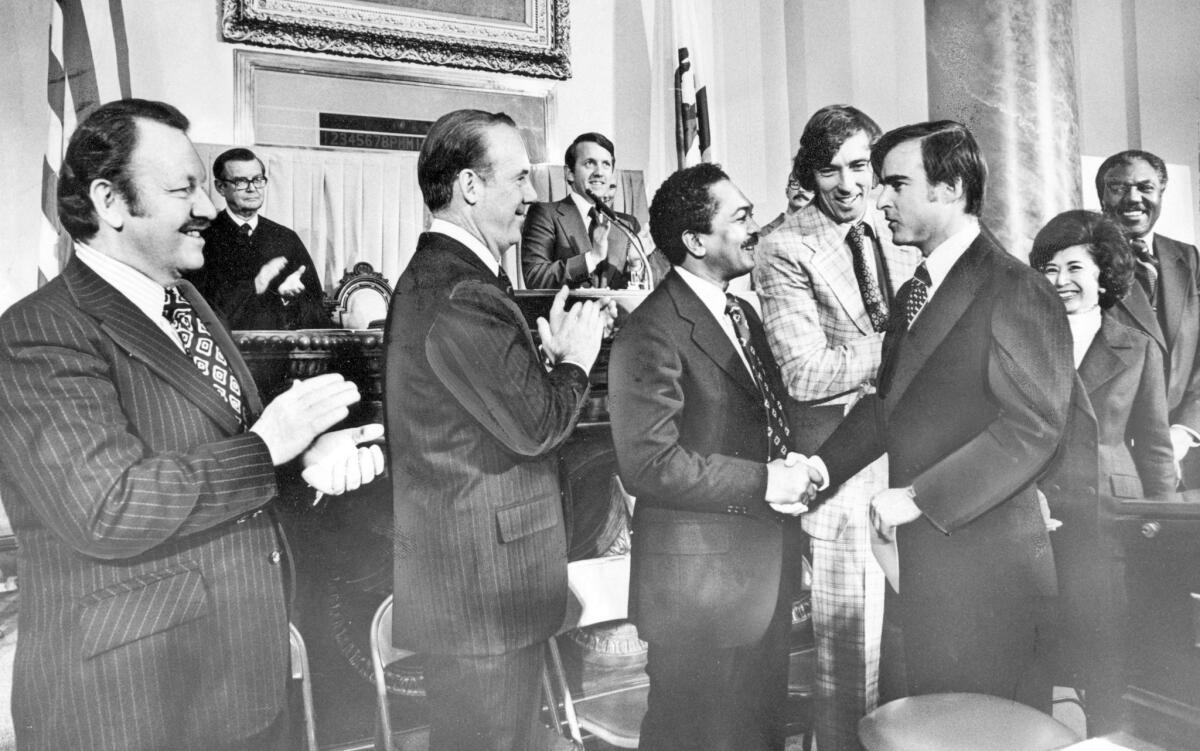
- Share via
For decades, Californians watched, analyzed, criticized and voted for Edmund G. Brown Jr. And for all that, he remains one of the most captivating, bewildering, inspiring and infuriating figures in the state’s history. He may also be the most quintessentially Californian, embodying an admixture of contemplation, activism and self-contradiction at the heart of a nation-state with a population bigger than Canada’s.
Jim Newton has been preoccupied with and fascinated by Jerry Brown for a lifetime, and his new biography, “Man of Tomorrow,” is a thoughtful look at the governor who shaped the state that has always reached the American future before the rest of the country.
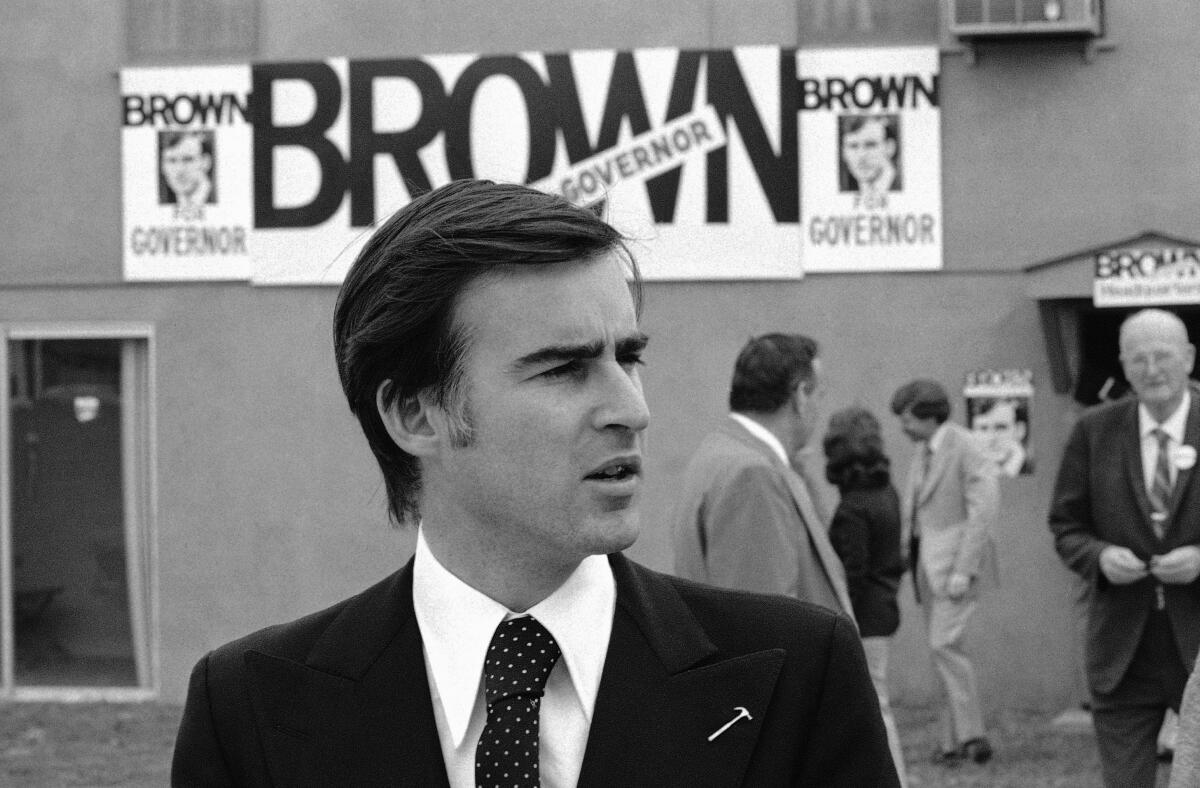
Brown left his footprints on the cities, suburbs, coasts, rugged uplands and arid deserts of California during a lifetime in public office. So much of his story is known — so much of it has been chronicled in these pages — that the story Newton lays out may seem familiar. But it is the play of this man of the mind against the experience of a veteran newsman — once the editorial page editor of the Times, now affiliated with UCLA — that makes this volume a formidable contribution to the history of both the state and the country.
Newton, who has published biographies of Dwight Eisenhower and Earl Warren, writes with verve, grace and the advantage over past Brown biographers of covering the finished product, rather than a work in progress.
Let’s start at the beginning, for it helps us understand where Brown and California end up. Drawn to the confines of the seminary, Brown intended to become a Jesuit priest — trying, as he put it, “to overcome the self-indulgent, weak part of human nature.” This would turn out to be a lifelong goal. He picked grapes and picked over the Bible, thinking he had picked the right way to traverse the world: through “abnegation and continuous mortification.”
These would be his watchwords and guideposts, making him, as Newton puts it, “subservient to God and mindful of nature and its immutable commands.”
The rhythms and nostrums of the seminary appealed to Brown, shaped him, motivated him. Newton portrays him as an oddity in American civic life, “a pragmatic liberal deeply committed to faith.” He came of age in a cassock but lived for a cause.
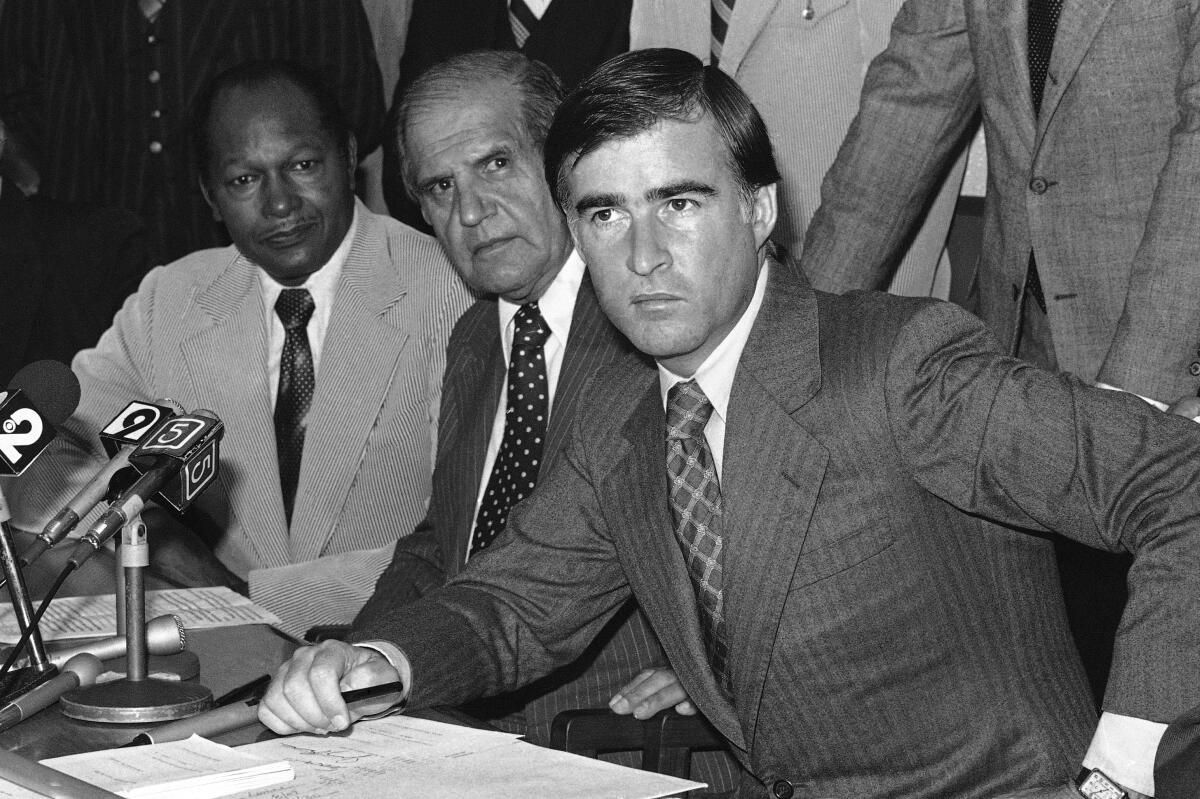
He and his father, Gov. Pat Brown, had an affectionate but uneasy relationship that Newton sketches with skill, and in his comparisons between father and son he sets the younger Brown in sharp relief: “His son would ... never, once he reached power, be accused of glad-handing — dealmaking, yes, but out of pragmatism, not out of uncertainty.”
Making a decision that haunted him as much as it defined him, Brown left the Jesuits. But they didn’t leave him, even as Zen teachings followed — “a fresh dogma-free alternative” to Catholicism, Newton says, freighted with “a familiar grammar, imbued with a fresh vocabulary.”
In the early life of Jerry Brown, as in the early pages of this book, Newton sets out his central theme:
“Over time, the sturdy rope that ran from Saint Ignatius to Zen shaped Brown’s appetite for the great ideas of politics — notions otherwise as disparate as capital punishment, nuclear weapons and climate change — all of which had in common a necessary humility before fearsome powers such as death, destruction, the earth itself.” All the rest, as a sage from the Jewish faith tradition put it centuries ago, is commentary.
And there is plenty of commentary in these 448 pages, and people too: Willie Brown, Henry Waxman, Richard Nixon, Alan Cranston, Mario Savio, Warren Christopher, Joan Didion, Ken Kesey, Charles Manson, Linda Ronstadt, Cesar Chavez, Patty Hearst, Harvey Milk, Jim Jones and the medfly. Newton has produced a history of California as much as a biography of Brown.
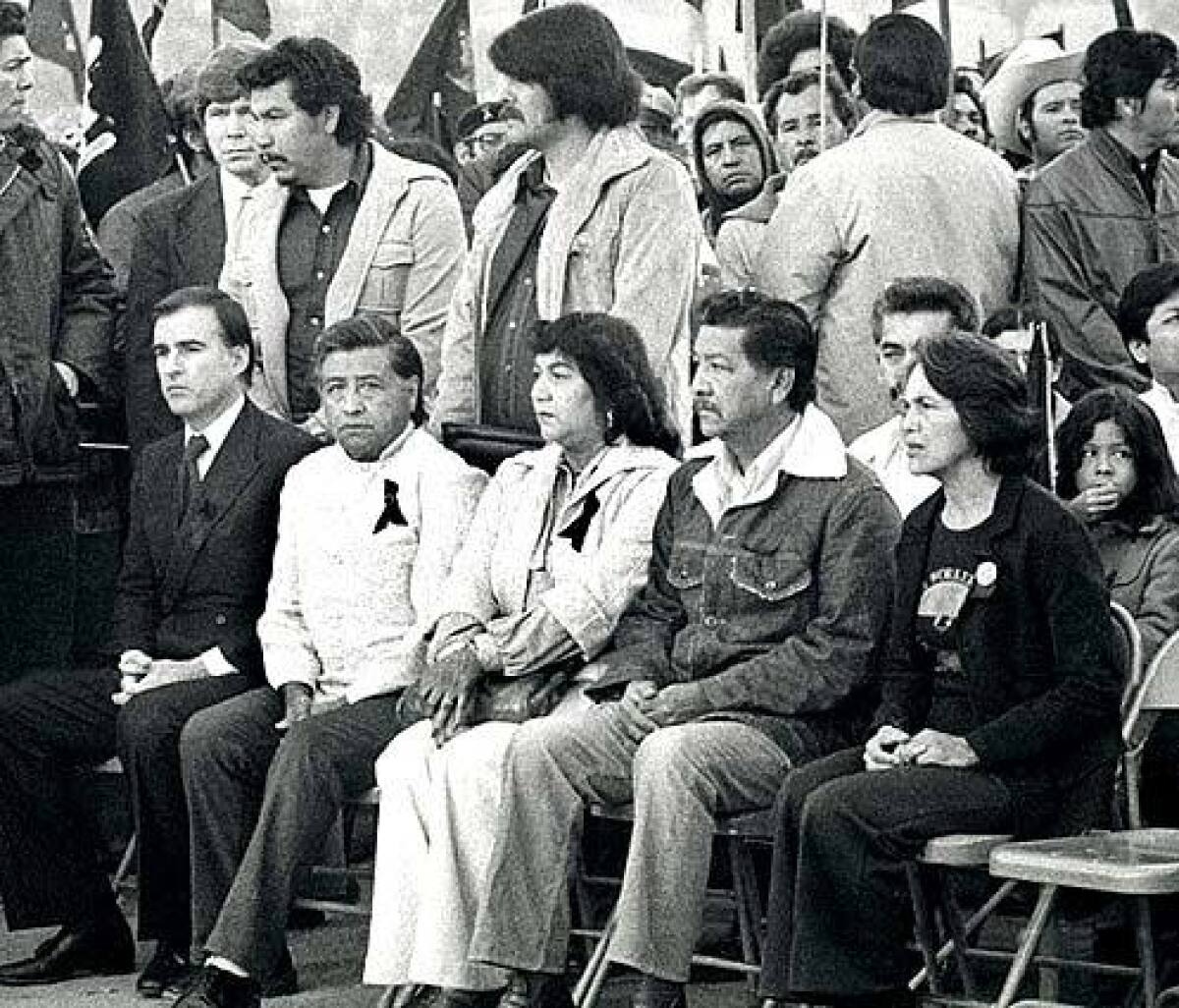
But the reader comes back to the 34th and 39th governor of California, and to the result of Newton’s deep examination of a man whose 16 years as governor were the longest reign in the state:
“[H]e walked a path of tradition while also inviting discovery. That tension — contradiction, some might say — helped reinforce his detachment from the currents of the day. He could seem to outsiders so utterly modern, with his youth and girlfriends and talk of space exploration and technology, yet he was not and never would be a modernist. While others plotted political strategy and reveled in showing Reagan the door, Jerry Brown read Wittgenstein and sat quietly in monasteries, rising early, saying little, thinking deeply.”
It wasn’t only Wittgenstein. Newton plumbs the Brown mind, finding traces of E.F. Schumacher, Ivan Illich and Michel Foucault and unearthing the concept of “subsidiarity,” which translates in the political realm to decentralization — the delegation of solutions to those localities (or even families) most affected by the problem.
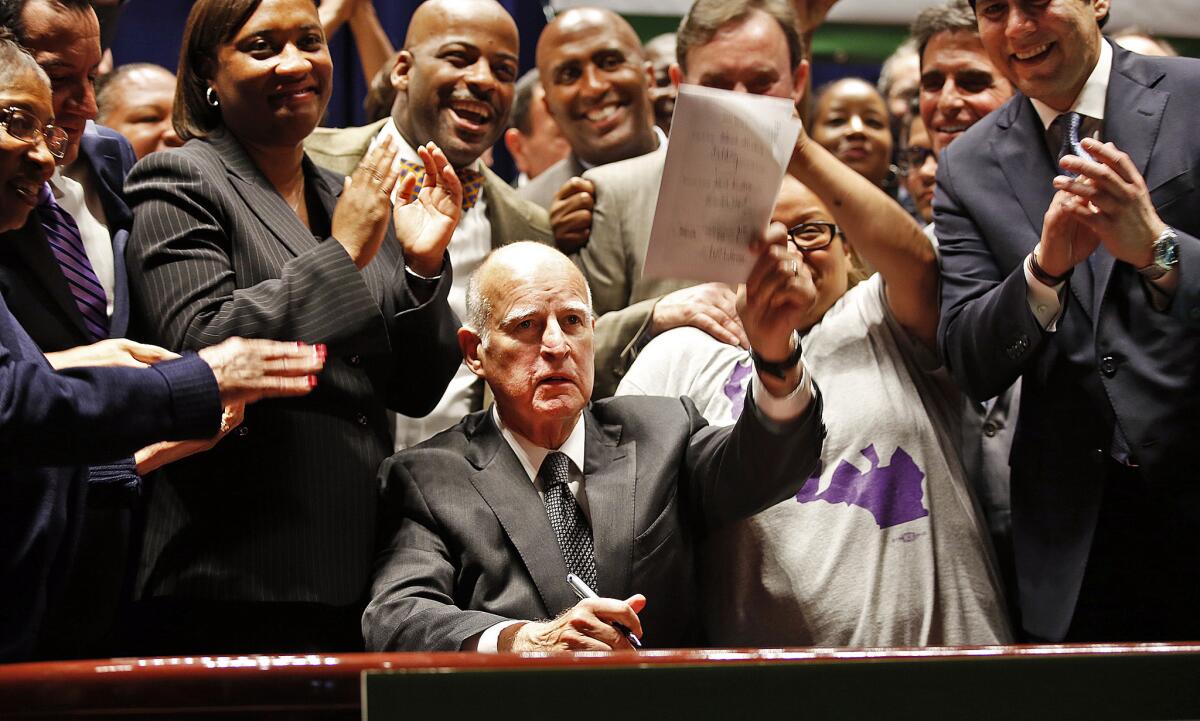
When Brown returned to the governor’s chair in 2011 after stints as mayor of Oakland and state attorney general, he was in a different period in his life — and California was in a different place too. Brown had gone from wise guy to wise man, from skinflint to a bit of a spendthrift; the bullet train caught his eye and his imagination, though it also courted controversy. “It’s not always easy,” Newton concludes, “to be a man of tomorrow.”
It was not always easy to live down Brown’s yesterdays either. “I’m 79, John,’’ he told Sen. John McCain, who was then 80. “I don’t have to bull— anymore.”
He didn’t. I had a half-hour with him, there in the state Capitol, in his last hours as governor. He spoke a little Latin, maybe just for fun or for show, and of course he ranged from the Austro-Hungarian empire to the way Costco packages its milk, with a slight digression into the philosophy of Carl Jung. But nestled among his layer cakes of dependent clauses was a clear-eyed assessment of what he had accomplished and left unaccomplished — and what was left for others to do.
Newton saw that too. “As Brown left office, he left a California of great wealth but of shocking poverty and glaring inequality as well,” he writes. “And yet the standard of successful leadership is not the elimination of all problems but rather proof of progress. By that measure, Brown was undeniably successful.” In the end Newton calls Brown “a gift to history.” So is his book.
Man of Tomorrow: The Relentless Life of Jerry Brown
Jim Newton
Little, Brown: 448 pages, $30
More to Read
Sign up for our Book Club newsletter
Get the latest news, events and more from the Los Angeles Times Book Club, and help us get L.A. reading and talking.
You may occasionally receive promotional content from the Los Angeles Times.






